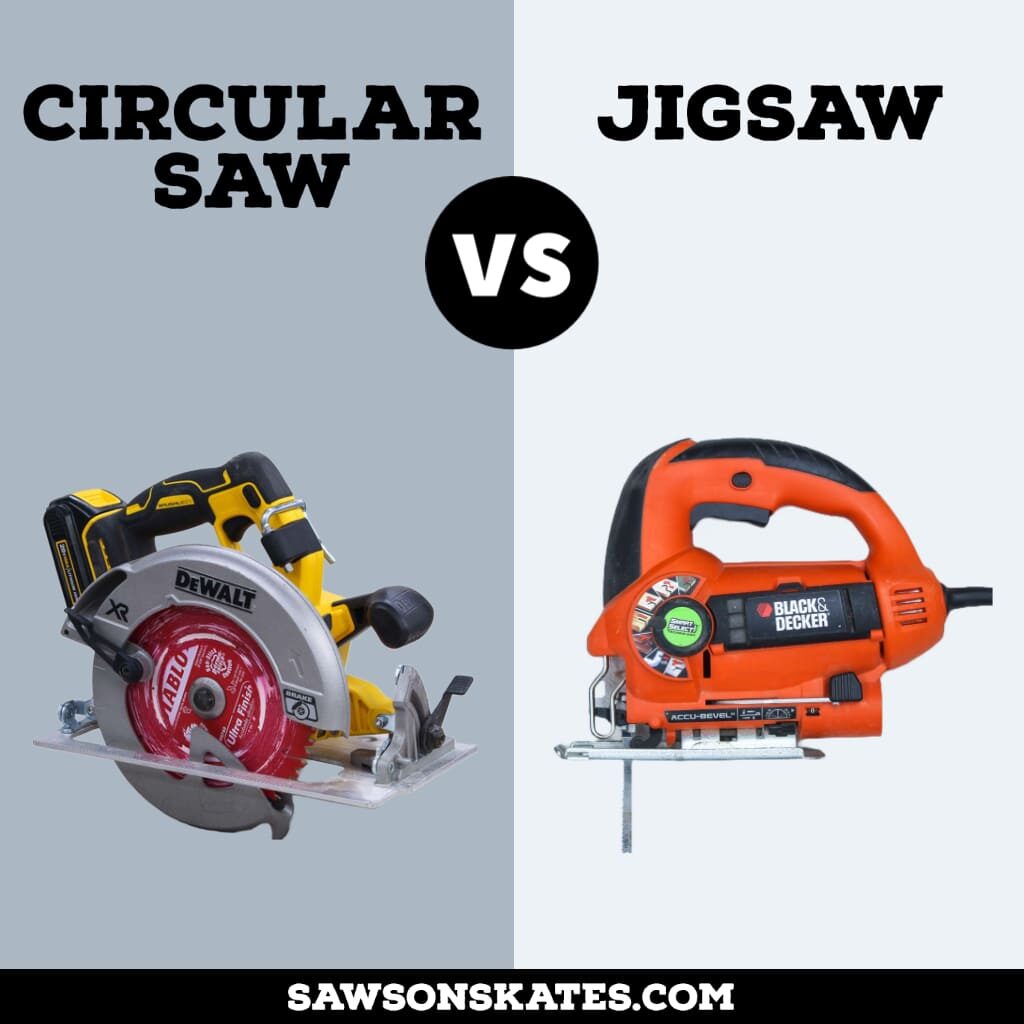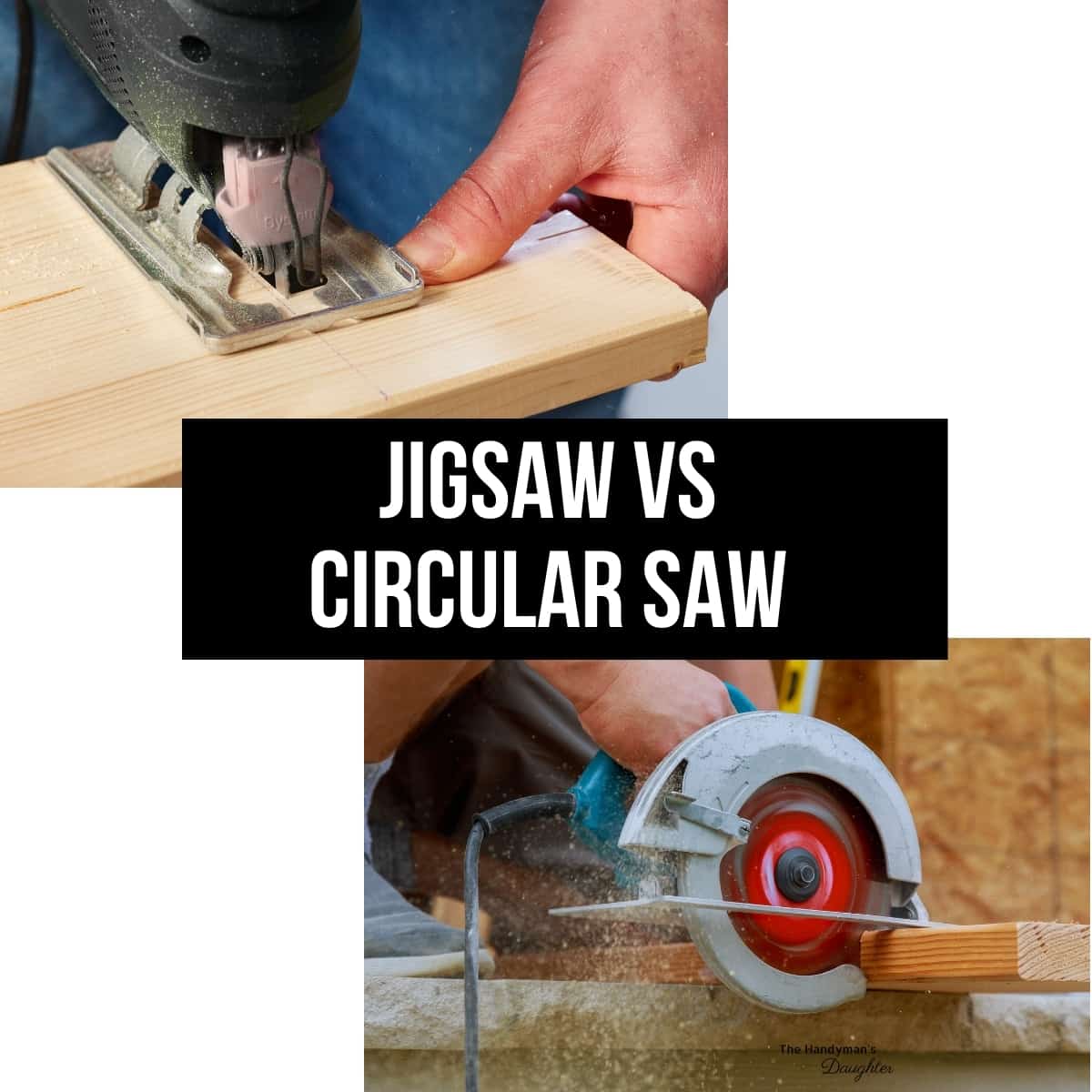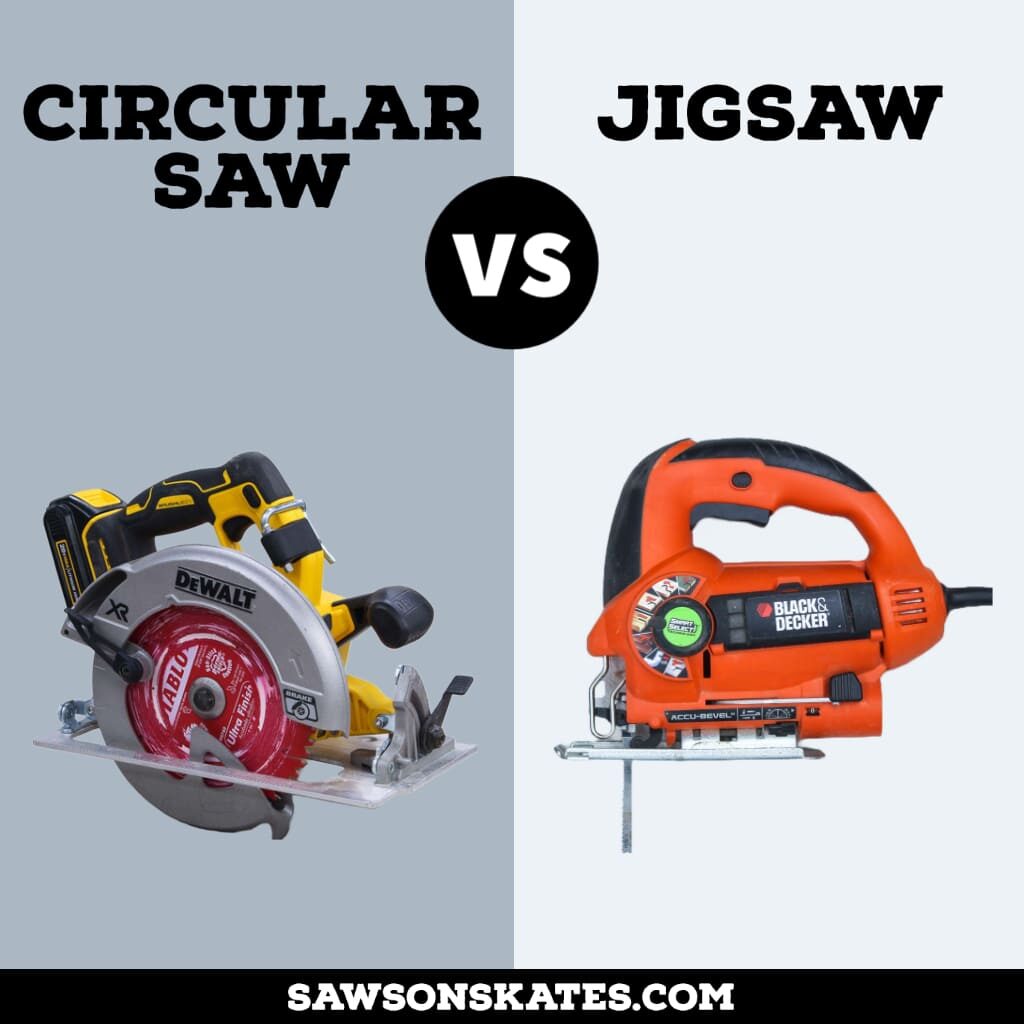Looking to cut through materials with precision and power? Wondering if a circular saw or a jigsaw is the tool for the job? Well, you’ve come to the right place! In this guide, we’ll explore the age-old question: “Is a circular saw better than a jigsaw?” Let’s dive in and find out which of these mighty tools reigns supreme in the world of cutting!
When it comes to power and versatility, a circular saw is a force to be reckoned with. This mighty tool boasts a spinning blade that can slice through various materials like butter. From lumber to plywood, a circular saw can make quick work of your cutting tasks. But is it truly the champion of all things cutting?
On the other hand, we have the jigsaw, a tool known for its precision and maneuverability. With its slender design and reciprocating blade, a jigsaw can excel at making intricate cuts and curves. It’s the go-to tool for tasks like making intricate designs or cutting out shapes from thin materials. But does precision outweigh power in the battle between the circular saw and the jigsaw? Let’s find out!
When it comes to choosing between a circular saw and a jigsaw, it all depends on the task at hand. While a circular saw is better suited for straight cuts and handling larger pieces of material, a jigsaw excels at making intricate curved cuts and working with smaller pieces. Both tools have their unique strengths and applications, so it’s important to consider the specific job requirements before making a decision.

Is a Circular Saw Better Than a Jigsaw? A Comparative Analysis
When it comes to choosing the right power tool for your cutting needs, the decision often boils down to a circular saw or a jigsaw. Both tools have their own unique features and benefits, making it essential to understand their differences and determine which one is better suited for your specific projects. In this article, we will explore the functionalities, benefits, and limitations of both the circular saw and the jigsaw to help you make an informed choice.
1. Functionality and Cutting Capabilities
The circular saw is a versatile power tool primarily designed for making straight cuts in various materials, including wood, metal, plastics, and even masonry. With a circular blade rotating at high speeds, it offers excellent cutting precision and can handle larger, thicker pieces of material with ease. It is ideal for tasks such as ripping lumber, crosscutting plywood, and making bevel cuts.
On the other hand, the jigsaw is a more versatile tool that excels at making curved cuts, intricate designs, and detailed work. It utilizes a reciprocating blade that moves up and down rapidly, allowing for precise control and maneuverability. Its ability to cut through various materials, including wood, metal, laminate, and plastics, makes it a popular choice among DIY enthusiasts and professionals who require intricate and curved cuts.
In summary, the circular saw is best suited for making straight cuts and handling larger materials, while the jigsaw specializes in curved and intricate cuts.
2. Cutting Speed and Efficiency
When it comes to cutting speed and efficiency, the circular saw holds the upper hand. With its powerful motor and large, rotating blade, it can make smooth and precise cuts quickly, especially when working with long pieces of material. The circular saw’s cutting capacity allows for more rapid completion of projects, making it a preferred choice for tasks that require efficiency and speed.
However, the jigsaw offers better maneuverability and control, enabling it to make intricate cuts that the circular saw cannot achieve. Although it might take longer to complete a cut with a jigsaw, it provides the flexibility to create detailed designs and curves effortlessly.
In conclusion, the circular saw is faster and more efficient for straight cuts, while the jigsaw offers better control and precision for intricate and curved cuts.
3. Versatility and Adaptability
When considering versatility and adaptability, the jigsaw takes the lead. Its ability to make intricate cuts and navigate tight corners makes it a valuable tool for a wide range of applications. From creating decorative patterns in wood to cutting shapes in laminate or tile, the jigsaw offers unparalleled versatility for tasks that require curved or detailed work.
While the circular saw is limited to straight cuts, it can still be used for a variety of projects. It is a staple tool in construction, carpentry, and woodworking, where its powerful and precise cutting capabilities are crucial. Its adaptability is further enhanced by the availability of different types of blades, such as those designed for ripping, crosscutting, or making bevel cuts.
In summary, the jigsaw is more versatile and adaptable for a wide range of applications, especially those that involve curved or intricate cuts. However, the circular saw remains a reliable and indispensable tool for straight cuts in various materials.
Benefits of Using a Circular Saw
1. Faster and more efficient for straight cuts.
2. Can handle larger materials and thicker pieces with ease.
3. Versatile cutting capabilities with different types of blades for various applications.
4. Provides precise and accurate cuts, especially when equipped with guides or fences.
5. Suitable for bevel cuts, angles, and rip cuts.
6. Ideal for construction, woodworking, and carpentry projects.
7. Offers excellent visibility of the cutting line, allowing for better accuracy.
Benefits of Using a Jigsaw
1. Versatile tool for making curved, intricate, and detailed cuts.
2. Allows for easy maneuverability and control in tight corners and spaces.
3. Suitable for cutting various materials, including wood, metal, plastic, and laminate.
4. Offers flexibility in creating decorative patterns and designs.
5. Enables easy blade changes to accommodate different cutting requirements.
6. Preferred choice for DIY enthusiasts and hobbyists who require precision and creativity.
7. Provides better visibility of the cutting line, enhancing accuracy during cuts.
Tips for Choosing Between a Circular Saw and a Jigsaw
1. Identify the specific cutting needs of your project. Determine if straight cuts or curved and intricate cuts are more prevalent.
2. Consider the type and size of the materials you will be working with. Circular saws are better for larger and thicker pieces, while jigsaws excel at smaller and more detailed work.
3. Assess the level of control and precision required. If you need to make precise cuts or navigate tight corners, a jigsaw might be the better option.
4. Take into account the speed and efficiency required for your projects. Circular saws are generally faster for straight cuts, while jigsaws offer more versatility but may take longer.
5. Consider your comfort and experience with each tool. If you have more experience with one tool and feel more confident using it, that might sway your decision.
The Verdict: Choosing the Right Tool for the Job
Ultimately, there is no definitive answer to whether a circular saw is better than a jigsaw or vice versa. Both tools have their own strengths and applications, and the choice depends on the specific needs of your projects. If you frequently work with larger materials and require straight cuts, a circular saw is the go-to option. However, if your projects involve intricate designs, curves, and detailed work, a jigsaw will be the more suitable tool.
Remember to consider the functionality, cutting capabilities, speed, efficiency, and versatility of each tool before making your decision. Assess your project requirements and determine which tool aligns best with your needs. Investing in one or both of these power tools will undoubtedly enhance your cutting capabilities and allow you to tackle a wide range of projects with ease.
Key Takeaways: Is a Circular Saw Better Than a Jigsaw?
- A circular saw is better for straight cuts in thicker materials like lumber.
- A jigsaw is more versatile and can make curved cuts and intricate designs.
- Circular saws are more powerful and can handle tougher cutting tasks.
- Jigsaws are easier to maneuver and control, making them suitable for beginners.
- The choice between a circular saw and a jigsaw depends on the specific project and desired outcome.
Frequently Asked Questions
Welcome to our frequently asked questions section where we compare circular saws and jigsaws. Whether you are a woodworking enthusiast or a DIYer, this article will help you determine which tool is better suited for your needs.
1. Which tool is better for making straight cuts?
When it comes to making straight cuts, a circular saw is the better choice. With its large, round blade and powerful motor, a circular saw can easily cut through various materials with precision. It is designed to make long, straight cuts with ease, making it ideal for tasks such as cutting plywood or trimming sheet goods.
On the other hand, while a jigsaw can cut straight lines, it requires more skill and effort to achieve accurate results. Jigsaws are better suited for curved cuts and intricate designs rather than making long, straight cuts.
2. Which tool is more versatile?
Both tools have their own set of advantages, but a jigsaw is generally considered more versatile. With its small and maneuverable blade, a jigsaw can make intricate cuts in various angles and shapes. It is perfect for cutting curves, bevels, and irregular shapes.
While a circular saw is great for straight cuts, it is limited when it comes to curved or intricate designs. Therefore, if you need a tool that offers more flexibility for different cutting tasks, a jigsaw would be the better option.
3. Which tool is safer to use?
Both circular saws and jigsaws can be safe to use if proper precautions are taken. However, in terms of general safety, a jigsaw is considered to be safer. It has a smaller, less intimidating blade, which reduces the risk of severe injuries. Jigsaws also have a built-in blade cover that helps protect your fingers from accidental contact with the blade.
On the other hand, circular saws have larger blades and are more powerful, which means they can cause more serious injuries if not used correctly. It is important to follow safety guidelines, use safety equipment such as goggles and gloves, and always keep your hands away from the blade when operating a circular saw.
4. Which tool is better for beginners?
If you are a beginner and just starting out with woodworking or DIY projects, a jigsaw would be the better tool to begin with. Jigsaws are easier to handle and maneuver, making them more forgiving for beginners. They offer more control and allow you to make mistakes without ruining your project.
Circular saws, on the other hand, require more skill and precision to operate effectively, especially when making straight cuts. They are better suited for experienced users who have a good understanding of woodworking techniques.
5. Which tool is more suitable for construction projects?
When it comes to construction projects that involve framing, cutting large boards, or making long, straight cuts, a circular saw is the preferred tool. Its powerful motor and larger blade allow for efficient and precise cutting of construction materials such as lumber and plywood. It is the go-to tool for tasks that require speed and accuracy.
While a jigsaw can certainly be used for certain construction tasks, it is better suited for smaller, more intricate cuts. Its versatility makes it a valuable tool for detailed work and finishing touches.

Summary
In this article, we explored whether a circular saw is better than a jigsaw. A circular saw is great for straight cuts, while a jigsaw is more versatile for curved cuts. Consider the task at hand to choose the right tool. Both have their strengths, so it ultimately depends on your needs and preferences.
